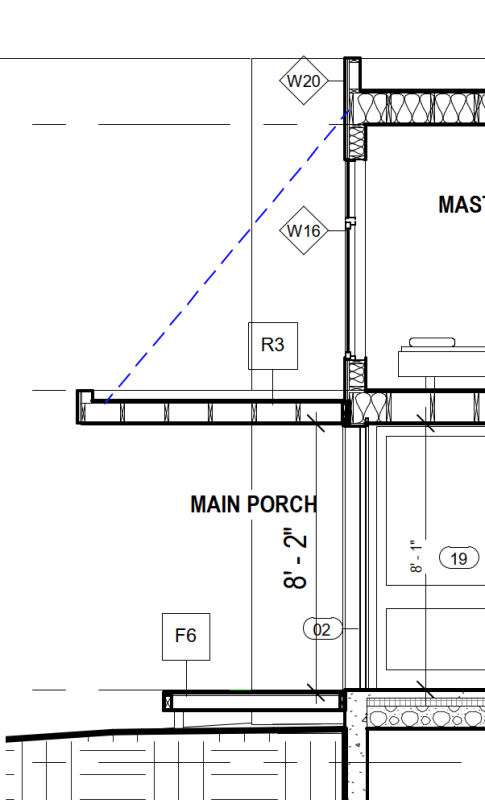SinStrucEng
Structural
- Nov 11, 2022
- 88
Good day everyone,
A client I am working with has requested a suspended porch canopy over the main entrance to their home. Snippet below. I am yet to do something of the sort and was hoping to get some tips on the design, construction and generally "accepted" approaches. The canopy is conceptualized to be about 5 feet wide and project 6-8 feet from the face of the building. Our unfactored loads are 1 kPa (live, roof access), 2.44 kPa (snow), and 0.72 kPa (dead).
I was planning to have the cables (2 to 4) through-bolted to a steel ledger at the outer edge of the canopy, and then secured to the roof joists above (which are 64x302 I-joists). I have concerns about the upper connection and also not sure which cables are appropriate/commonly used for this application.
Thank you in advance.

A client I am working with has requested a suspended porch canopy over the main entrance to their home. Snippet below. I am yet to do something of the sort and was hoping to get some tips on the design, construction and generally "accepted" approaches. The canopy is conceptualized to be about 5 feet wide and project 6-8 feet from the face of the building. Our unfactored loads are 1 kPa (live, roof access), 2.44 kPa (snow), and 0.72 kPa (dead).
I was planning to have the cables (2 to 4) through-bolted to a steel ledger at the outer edge of the canopy, and then secured to the roof joists above (which are 64x302 I-joists). I have concerns about the upper connection and also not sure which cables are appropriate/commonly used for this application.
Thank you in advance.

